15 to 17 October 2019
Copi Hollow to Broken Hill via Silverton, 149km
Before we went to watch the Broken Heel parade on Saturday we had driven up the looming Line of Lode which defines the town of Broken Hill with Ronda and Graham. Broken Hill’s name comes from the description written by explorer Charles Sturt in his diary of a break in the hills where iron ore was found. The broken hill has long been mined out of existence along with many more of the town’s surrounding hills, the huge mullock heap all that remains along the Line of Lode. From the town it towers over the buildings but also provides a great vantage point to look back down on it.
The Line of Lode now houses a memorial to the nearly 900 miners who have died in the town’s mines from 1883 to the present day. The memorial records the date of each miner’s death and his age as well as recording somewhat gruesomely how he died. Fall or crush injuries and lead poisoning were common causes of death. Heart failure was a more surprising but equally common cause. It was a sobering introduction to the town’s mining history
and one which the memorial’s position didn’t let us forget once we got down into the town.
Even when you can’t see the Line of Lode there’s no avoiding the fact that Broken Hill is a mining town. Its streets are literally named after the minerals its hills produced and one of the original headframes from the mines sits on display in a park.
As a result of its mining activities Broken Hill became synonymous with unionisation and industrial action. The Barrier Miners’ Association was formed in 1884. The struggle for equal pay and safe working conditions resulted in a series of strikes beginning in 1892. During the strike of 1909 miners who broke the strike were vilified with mock graves.
When we returned to Broken Hill to stay a couple of nights we started by driving straight through to visit neighbouring Silverton, an almost deserted silver mining town. The hotel celebrates the surrounding area’s starring role in another famous Australian film, Mad Max, and somewhere in the town a die hard fan has set up a museum. Neither of us having seen the film, we gave it a miss.
We did, however, pop in to one of the number of artists studios. Outside John Dynon’s studio his bright, paint splattered canvases were cars and bikes but inside his landscapes were more straightforward scenes of the outback with added cartoon emus.
I couldn’t resist a dip into the Silverton gaol now turned museum. Built in 1889 it housed men and a few women from the surrounding area who had found themselves on the wrong side of the law. The record of sentences revealed disproportionate sentences for offences like offensive language and being idle and disorderly.
But like other local museums the cells of the old gaol were stuffed with local artefacts from Broken Hill and Silverton. The Broken Hill football team of 1935 were a dapper bunch!
There were washing machines from through the ages, hospital equipment and a perming machine that looked like some sort of torture apparatus!
By now we are getting used to camping in very different places but, at Ronda and Graham’s recommendation, in Broken Hill we made our camp at the Racecourse. It makes complete sense that when race meetings aren’t taking place this area of the town should make some money from tourists. We found ourselves camped right in the paddock, under the grandstand by the finish line. Our camp pet here was not, however, a horse but a lovely shingle back lizard.
Our toilets and showers were in the jockeys’ changing rooms complete with weighing scales and a photo including a young, pre tax fraud, Lester Pigott.
The outback has inspired generations of artists with its vast landscapes and incredible changing colours and Broken Hill has been home to many of them including one of the Brushmen of the Bush group, Kevin “Pro” Hart. We visited the gallery dedicated to him in the outskirts of the town where he had lived almost all his life. Having worked in the mines his paintings often captured scenes of everyday life in the town. His paintings and sculptures of miners always featured them masked, symbolising their loss of identity in the darkness of the mines. His style and medium changed with influences of Monet, Lowry and Picasso but all evocative of the places and people he knew and loved. Jackson Pollock style, he also experimented with dropping paint from hot air balloons and cannons. Pro’s paintings can be found gracing walls across the world including at the White House. Despite his international fame, he never moved out of Broken Hill and by all accounts was a popular and generous local character around town right up until his death in 2006.
Whilst in art mode we drove out of town to the Living Desert Sculpture Park, the work of a group of 12 sandstone sculptors from around the world who got together to produce 12 very different works overlooking the desert. On its high hill the sculpture park was a very windy spot when we visited and we didn’t linger that long.
In town, in the days after the big parade we could wander along the main drag undistracted to take in the heritage buildings.
And with all the cabaret shows over, I couldn’t leave Broken Hill without a visit to the Palace Hotel where Tick, Adam and Bernadette had stayed in its muraled walls. Painted by indigenous artist, Gordon Waye, the murals cover every inch of the walls.
Our second night in Broken Hill continued very windy and very cold. The wind almost turned the tent inside out and we had our first casualty amongst the tent poles. The wind and cold was still biting in the morning so we wilfully disobeyed the signs to make our tea in the jockeys’ changing rooms. We also used it to escape the cold to pack up the tent. Our hands and feet were freezing by the time we got in the car to leave.
When is Australia’s Spring going to start?! We are still (not so) patiently waiting…


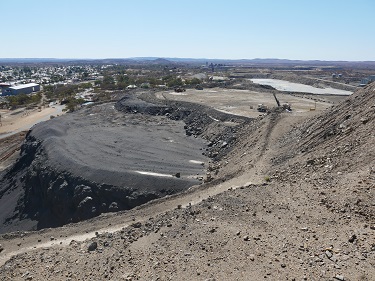










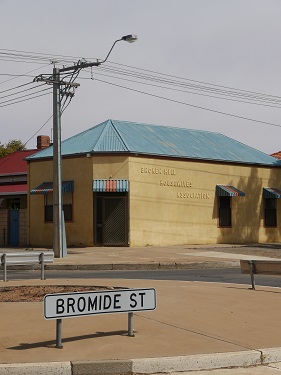









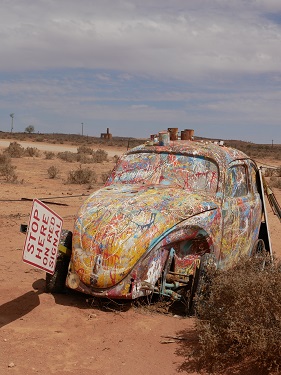














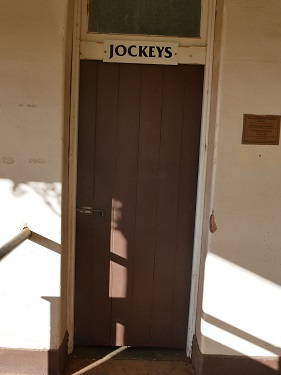














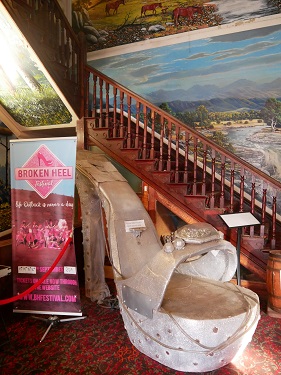





Some of the art work is incredible – not a bit like anything you see here.
LikeLike